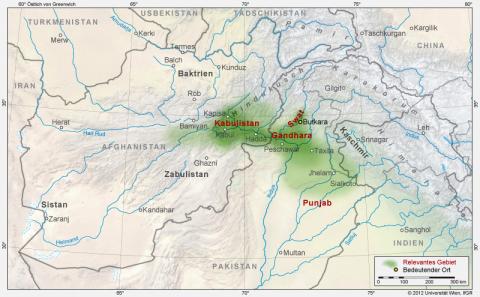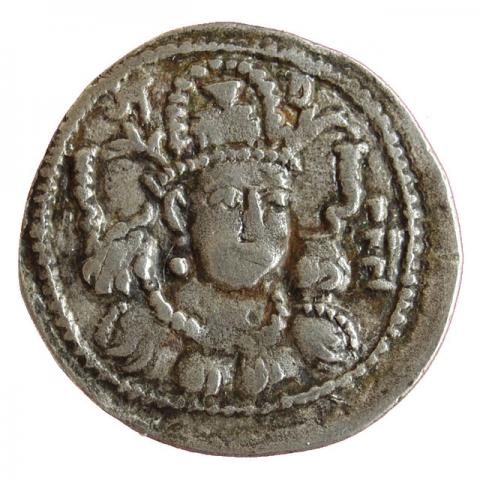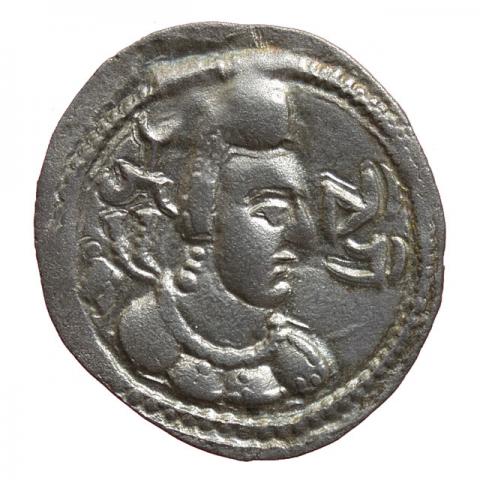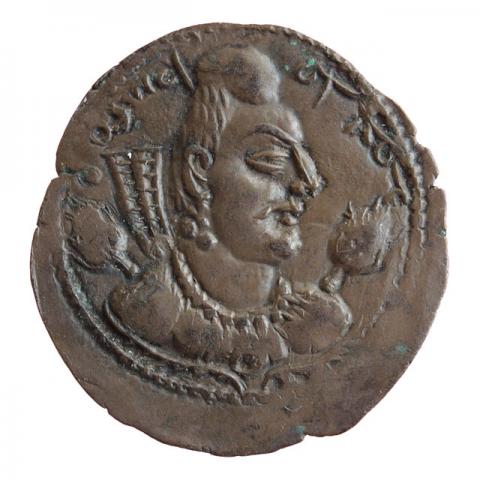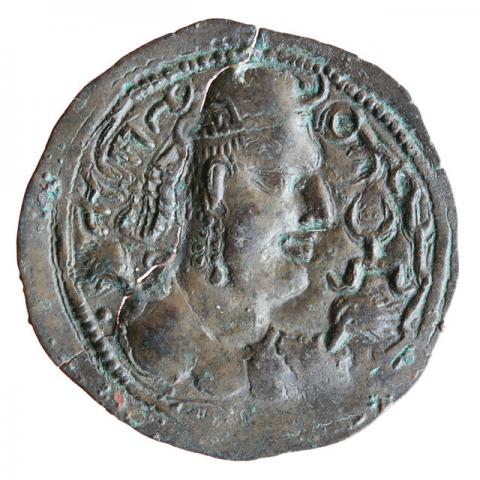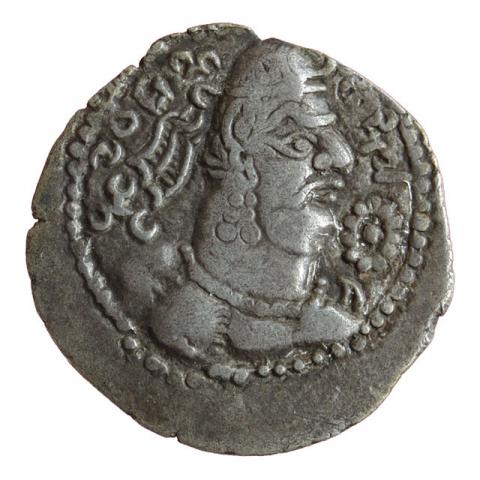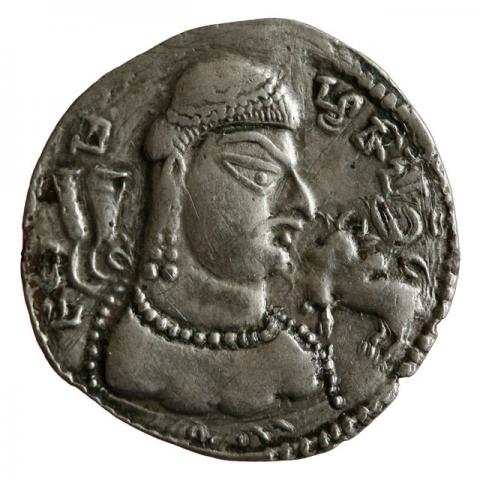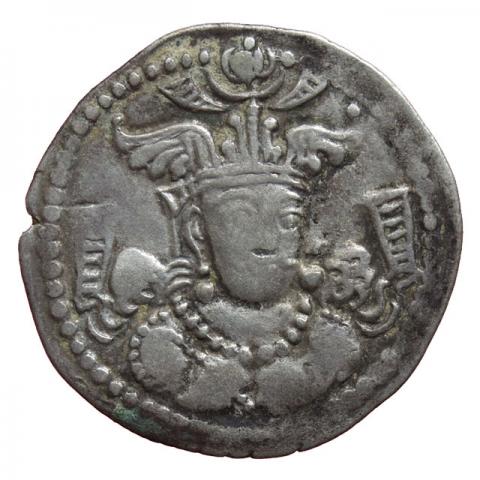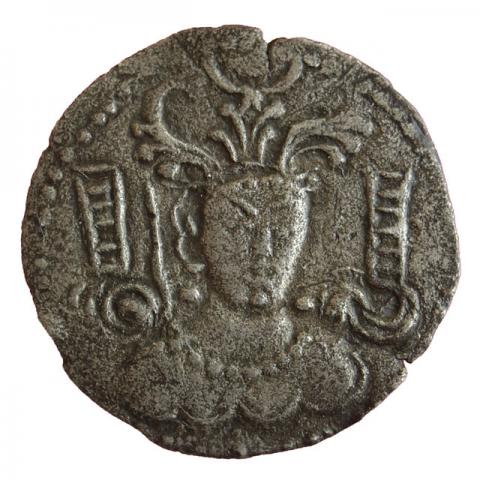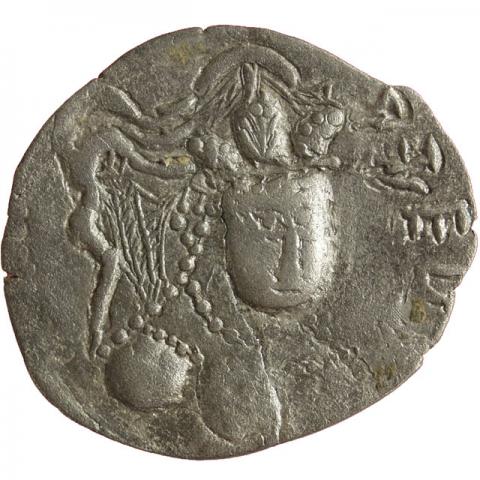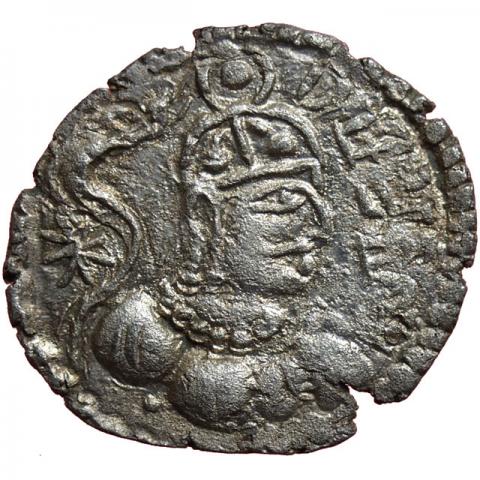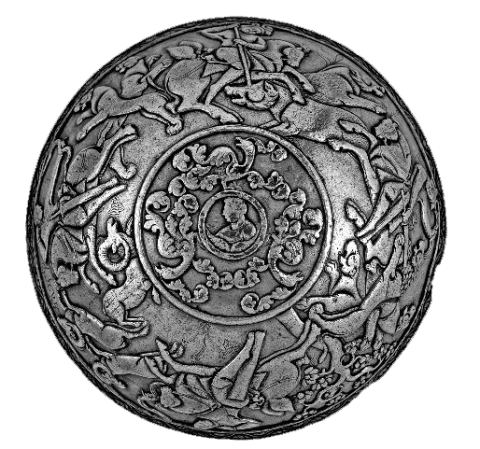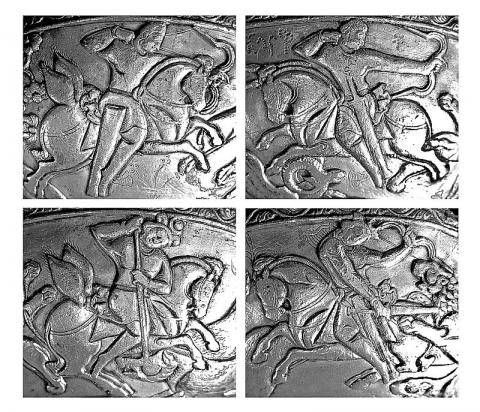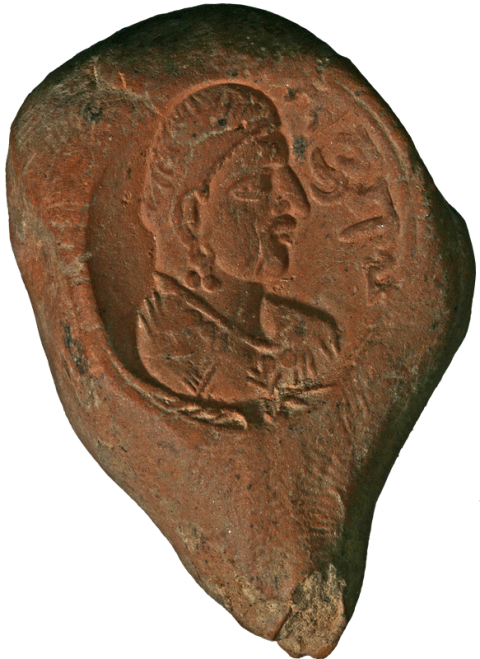A. Drachm of Khingila (ca. 430/40–495 CE). (© Aman ur Rahman)
Crowned bust of the king in three-quarter view like the Kidarite model; the crown is composed of diadem with a crescent moon above the forehead and wings on the sides.
B. Silver bowl with a hunting scene, found in Swat Valley (Uddiyana). (© London, British Museum)
Four hunters are shown; based on their crowns and features two can be identified as Alkhan and two as Kidarites. One of the Alkhan is depicted a second time in the central medallion of the bowl; he probably commissioned the bowl.
C. Butkara I (construction phase 4), wall painting with donor image. (© Rome, IsIAO)
Remnants of wall painting dating to the 5th century CE were found in the Buddhist sacred area of Butkara I (Swat Valley). One of these fragments shows the donor figure, who, based on his characteristic features, can be identified as an Alkhan ruler, thus confirming the execution of the wall paintings to this period.
Contrary to the image conveyed in literary sources that the Huns were barbarian wildmen and destroyers of ancient cultures, the Hunnic rulers are also known as founders of religious monuments and presented themselves as an integrative power equally open to all religions and ethnic groups.
D. Clay bulla with the image of an Alkhan ruler and the Brahmi inscription "Avrttagana" (name of the ruler?). (© Aman ur Rahman)


